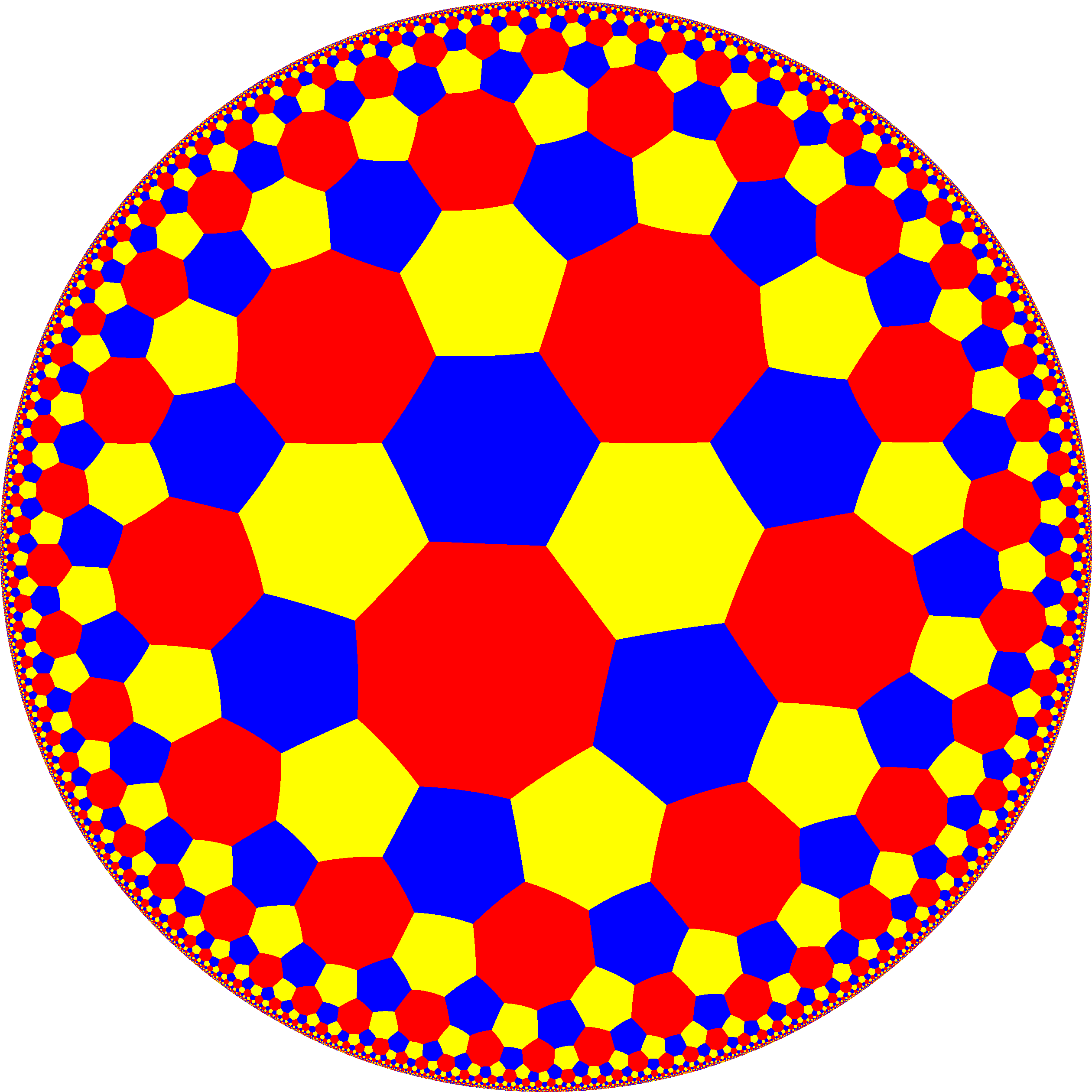|
Truncated Order-8 Triangular Tiling
In geometry, the truncated order-8 triangular tiling is a semiregular tiling of the hyperbolic plane. There are two hexagons and one octagon on each vertex (geometry), vertex. It has Schläfli symbol of t. Uniform colors Symmetry The dual of this tiling represents the fundamental domains of *443 symmetry. It only has one subgroup 443, replacing mirrors with gyration points. This symmetry can be doubled to 832 symmetry by adding a bisecting mirror to the fundamental domain. Related tilings From a Wythoff construction there are ten hyperbolic Uniform tilings in hyperbolic plane, uniform tilings that can be based from the regular octagonal tiling. It can also be generated from the (4 3 3) hyperbolic tilings: This hyperbolic tiling is topologically related as a part of sequence of uniform Truncation (geometry), truncated polyhedra with vertex configurations (n.6.6), and [n,3] Coxeter group symmetry. See also * Triangular tiling * Order-3 octagonal tiling * Order- ... [...More Info...] [...Related Items...] OR: [Wikipedia] [Google] [Baidu] |
Geometry
Geometry (; ) is, with arithmetic, one of the oldest branches of mathematics. It is concerned with properties of space such as the distance, shape, size, and relative position of figures. A mathematician who works in the field of geometry is called a ''geometer''. Until the 19th century, geometry was almost exclusively devoted to Euclidean geometry, which includes the notions of point, line, plane, distance, angle, surface, and curve, as fundamental concepts. During the 19th century several discoveries enlarged dramatically the scope of geometry. One of the oldest such discoveries is Carl Friedrich Gauss' ("remarkable theorem") that asserts roughly that the Gaussian curvature of a surface is independent from any specific embedding in a Euclidean space. This implies that surfaces can be studied ''intrinsically'', that is, as stand-alone spaces, and has been expanded into the theory of manifolds and Riemannian geometry. Later in the 19th century, it appeared that geometries ... [...More Info...] [...Related Items...] OR: [Wikipedia] [Google] [Baidu] |

